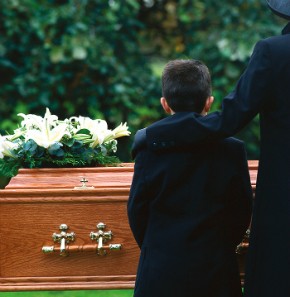Children at the grave
For career day at my daughter's school, I brought pictures of some of the things pastors do. The students were mostly interested in the funerals.

Last spring the principal of my daughter’s elementary school invited me to attend career day. I showed up in the lobby, alb on hanger, and sat with a pizza shop owner, filmmaker, and cardiologist before being ushered into the classroom to share about my job as a pastor. I’d brought pictures with me of some of the things I do—Sunday school, hospital visits, committee meetings, and funerals.
The children were mostly interested in the funerals. “Have you ever seen a dead person?” one asked. “Do you have to dig the hole to bury them?” “What happens when you die?” “Someone told me that dead people go to heaven. Is that true?”
Eventually the teacher announced that it was time for the next parent to take my place, but the children wouldn’t let me go. Robed in white and crouched on a blue plastic chair, I watched as a small line formed in front of me. I felt like a priest hearing confession as each child came forward and whispered in my ear a story of death.




